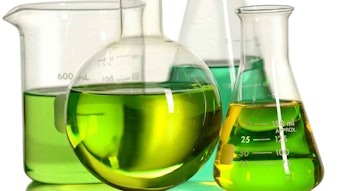Substances known to impart a sensation of warmth upon application are called warming agents and include capsicum (red pepper), ginger extract and vanillyl alcohol alkyl ether derivatives. Capsicum is the material used most as a warming agent in personal care; however, its side effects may include skin irritation, burning, itching and possible carcinogenicity.1 In relation, vanillyl alcohol alkyl ether derivatives, specifically vanillyl butyl ether (VBE), was investigated as an alternative, milder warming agent for personal care applications.
Vanilloids contain vanillyl groups that bind to the transient receptor potential type V1 channel (Vanilloid receptor-1, TRPV1), a nonselective cation channel that naturally responds to noxious stimuli such as high temperatures and acidic pH.2, 3 This binding of the vanilloid to TRPV1 opens the channel pore, which leads to an influx of predominantly calcium cations.4 In turn, this action causes membrane depolarization that, once reaching a threshold level, generates an action potential that is propagated along the axon to the synapse.5 Activated neurons will release glutamate, adenosine triphosphate (ATP) and a variety of neuropeptides as transmitters from the synapse. These neurotransmitters launch a cascade and eventually reach the central nervous system.2
Lab Practical: Using VBE
- The solubility of VBE with other ingredients affects the releasing level of VBE from the formulation to impart a warming sensation.
- VBE is oil-soluble and more stable in emulsions than water solutions.
- It is recommended that the PIT method be used to add VBE to formulations.
- VBE should be added as the temperature approaches PIT and not after the phase inversion.










